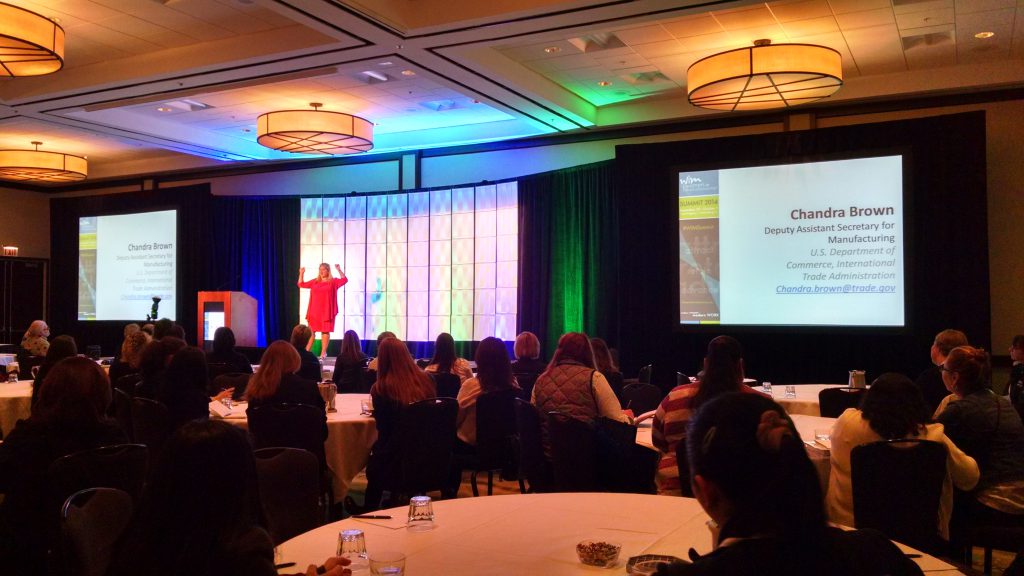
The Alliance for American Manufacturing (AAM) joined women manufacturing leaders in Illinois last week for the fourth annual Women in Manufacturing Summit, which brought women in industry together to network, collaborate, and inspire each other to achieve their career goals.
Although women make up half of the U.S. workforce, they hold just 24 percent of the jobs in manufacturing — which is something both Women in Manufacturing and AAM hope to improve upon. Our country can only succeed if we make things AND when women have a seat at the table.
I joined AAM Field Coordinators Meghan Hasse, Linda Murch, and Jenn Drudge at the summit to share with attendees the importance of public policy to the viability of the manufacturing industry as a whole.
Speakers Urge Women to Become Leaders
The summit included appearances by inspirational speakers such as Chandra Brown, deputy assistant secretary for manufacturing at the U.S Department of Commerce. Brown encouraged attendees to actively participate on company boards, committees, and governmental working groups and panels to ensure manufacturing succeeds.
Ginger Wange, manager of STEM Development for PBS SciGirls, shared the importance of mentoring the next generation of women in manufacturing. Science, Technology, Engineering, and Mathematics (that's STEM) careers like manufacturing offer better pay and benefits than many other sectors of the economy. But when women are absent from those occupations, their earning and leadership potential diminishes.
“Women in STEM is not just an equity issue, it’s an economic issue,” Wange noted.
Wange also shared concern for how women are portrayed in the media, including the absence of strong role models for girls to aspire to become. It’s our responsibility as women in leadership roles to mentor young girls to build their courage and self-esteem, because “If she can see it, she can be it.”
Motorola Solutions Tour
Drudge and Hasse also were able to tour the Motorola Solutions campus in Schaumburg, Ill., during their time at the summit. Workers at the 190,000 square-foot facility manufacture Association of Public-Safety Communications Officials-International (APCO) mobile and portable two-way radios and infrastructure units.
As part of the visit, Drudge and Hasse met with site manager Jim Companik, who explained the operations supply mainly to government entities. Motorola Schaumburg employs 104 direct labor positions on the factory floor and is very dependent on many more jobs through contract labor. Hasse noted:
As we walked along the shop floor, we were surprised to see such a lean, sparkling clean and quiet work environment. Another surprise — lack of robots. Most of the work was done by hand as the equipment is very high end and custom with secure information for each individual government entity.
According to Companik, the company recently brought back a line from Mexico. That means more jobs for Schaumburg and more opportunities for kids looking at a career opportunity in manufacturing to make something cool like police radios.
AAM field coordinator Meghan Hasse contributed to this post.
